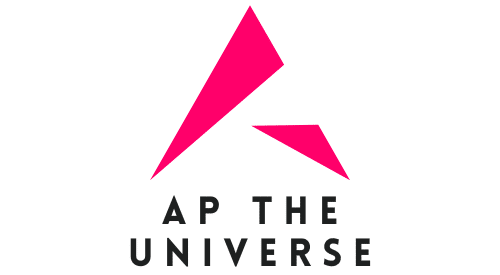Mastering outstanding accounts receivable for better cash flow

Outstanding accounts receivable directly impacts your business's cash flow and financial health. Effectively managing these receivables not only enhances liquidity and profitability but also mitigates the risk of bad debts. Explore key strategies, practical tips, and essential tools to optimize your accounts receivable process. By adopting best practices, you can ensure timely collections, boosting your bottom line and sustaining business growth.
Understanding Outstanding Accounts Receivable
Outstanding accounts receivable play a vital role in maintaining a business's financial health by ensuring steady cash flow. These are defined as the total amount owed to a company for goods or services sold on credit, forming a significant part of a company's current assets. As emphasized on the page: https://www.cashontime.com/en/articles/customer-outstandings/, understanding and managing these receivables is essential for preventing potential cash flow problems and improving liquidity.
This might interest you : Exploring the thrill of a hemp mystery box experience
The importance of managing accounts receivable cannot be overstated. Effective management ensures profitability by maintaining liquidity, allowing businesses to meet their operational and investment needs without resorting to debt. Delays in collecting outstanding receivables can strain cash flow, leading to increased dependency on external financing sources.
Several reasons contribute to outstanding receivables, including invoice disputes, economic conditions, prolonged payment cycles, and inefficient credit policies. These factors can adversely affect a company's financial standing if not addressed promptly. Implementing best practices such as timely invoicing, clearly defining credit terms, and using automation tools can mitigate potential risks. Regular reviews of customer payment behaviors and creditworthiness assessments further ensure sustainable cash flow management and reduced receivables turnover.
Also to discover : What’s the Best Method for Cleaning and Maintaining a Volvo XC90’s Leather Seats?
Tracking and Analyzing Outstanding Accounts Receivable
Overview of Accounts Receivable Aging Reports
Accounts Receivable Aging Reports are pivotal for businesses to track which invoices have been outstanding for extended periods. This report categorizes receivables based on how long an invoice has been overdue, helping businesses prioritize collections. By understanding which accounts are over 30, 60, or 90 days overdue, businesses can better strategize their collection efforts and mitigate financial risks associated with delayed payments.
Calculating Days Sales Outstanding (DSO)
The Days Sales Outstanding (DSO) metric is essential for measuring the average number of days a company takes to collect revenue after a sale. Calculating DSO involves dividing the total accounts receivable during a particular period by total credit sales and then multiplying by the number of days in that period. A lower DSO indicates efficient collections and healthier cash flow, while a higher DSO suggests potential issues in the receivable process.
Understanding the Accounts Receivable Turnover Ratio
The Accounts Receivable Turnover Ratio provides insight into how effectively a company collects its receivables. This ratio is calculated by dividing net credit sales by average accounts receivable. A higher turnover ratio points to efficient collections and improved liquidity, whereas a lower ratio may indicate issues with credit policies or customer payment compliance. Monitoring this ratio regularly aids in diagnosing and improving receivable processes.
Strategies for Managing Outstanding Accounts Receivable
Establishing Clear Invoicing Processes
The first step in effective accounts receivable (AR) management is to ensure that invoicing is clear and precise. Businesses should immediately send invoices after transactions are completed. Clearly stating payment terms, such as "Due Upon Receipt," eliminates ambiguity about timelines. This encourages prompt payments and reduces the days sales outstanding (DSO), enhancing liquidity.
Effective Collection Techniques and Communication with Customers
Actively engaging in communication with customers about their outstanding accounts can significantly improve payment timeliness. Sending out reminders before due dates and personal follow-ups for overdue accounts strengthens customer relationships and encourages quicker payment resolutions. This proactive approach can help decrease bad debts and improve cash flow.
Implementing Technology Tools for Enhanced AR Management
Adopting automation tools for the AR process simplifies the handling of invoices and payment tracking, reducing manual errors and increasing efficiency. Software solutions can automatically generate invoices, send reminders, and track payment statuses, freeing the team from repetitive tasks and focusing on strategic collection planning. Automated systems also offer real-time data for better decision-making, ensuring businesses manage their receivables proactively.
Financial Implications of Outstanding Receivables
Analyzing the Financial Risk of Aging Receivables
Aging receivables can pose significant financial risks, primarily due to the potential for bad debt. The longer an account remains unpaid, the greater the chance it may be uncollectible. Consequently, this affects the company's cash flow, as funds expected for reinvestment or expenses are tied up. Such risks necessitate strict credit policies and regular monitoring of receivables.
Relationship Between Cash Flow and Accounts Receivable Management
The management of accounts receivable is directly linked to a company's liquidity. Efficient handling of these receivables ensures a steady influx of cash, essential for day-to-day operations. Conversely, delays in collections can lead to cash crunches, hindering the company's ability to settle its obligations promptly. Implementing strategies like timely invoicing and collection reminders can mitigate these issues.
Consequences of High Outstanding Receivables on Business Operations
When receivables are excessively high, they can disrupt business operations. Apart from straining liquidity, this scenario can lead to increased borrowing costs if the company resorts to external financing to meet its cash needs. Moreover, the inability to reinvest or take advantage of new business opportunities is another repercussion, making effective receivables management critical for sustaining growth and operational efficiency.
Best Practices for Optimizing Accounts Receivable
Importance of Real-Time Reporting and Documentation
For effective management of accounts receivable, it's vital to maintain real-time reporting and precise documentation. This practice ensures that businesses have up-to-date data on outstanding invoices, enabling prompt actions to reduce days sales outstanding (DSO). Accurate records help in tracking cash flow and making informed decisions. Moreover, real-time data aids in identifying trends, potential risks, and opportunities for improvement.
Strategies for Customer Education on Payment Terms
Educating customers about clear payment terms is essential in managing receivables efficiently. It involves setting expectations upfront, such as specifying due dates and communicating any penalties for late payments. Clear terms prevent misunderstandings and disputes, ensuring smoother transactions. Regular communication and reminders enhance customer relationships, encouraging timely payments and reducing outstanding accounts.
Utilizing Automated Solutions for Efficient Receivables Processing
Automation in the receivables process is key to boosting efficiency and reducing manual errors. Implementing automated solutions like invoicing software can streamline operations, ensuring quicker processing of payments and tracking of receivables. Automation allows businesses to focus on strategic tasks by minimizing the workload on the accounts receivable team. Embracing such technology optimizes cash flow management and strengthens financial stability.
